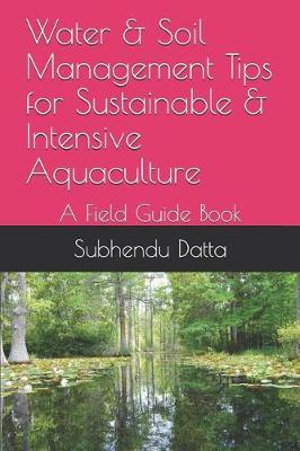
PublishedIndependent Publishe, April 2019 |
ISBN9781092715195 |
FormatSoftcover, 70 pages |
Dimensions22.9cm × 15.2cm × 0.5cm |
Part - I: Management of water quality parameters of fish pondsUnderstanding the meaning of different colours of water and their management tips. Importance of depth &temperature of water. Turbidity, transparency & sunlight. Importance of water pH and its management techniques.
Importance of Dissolved Oxygen in fish culture and options available for mitigation of low oxygen. Importance of hardness of water for successful breeding, hatching and larval rearing of fishes. tips for reducing the hardness level of water. Importance of salinity in fish culture. Options available for management of high and low salinity level. Importance of nitrogen, ammonia and ammonium. Management of ammonia level in aquarium and fish culture ponds. Management of nitrite and nitrate level in aquarium and fish culture ponds. Importance and Management of Phosphate, Iron and Chlorine in Aquaculture. Importance of TDS in fish culture. management of TDS level in Recirculatory Aquaculture System (RAS). Importance of organic carbon and C: N Ratio in Biofloc system. Part - II: Management of soil sediment: Role of Soil Parameters in Pond Productivity - How pond soil differs from field soil? Management of bottom soil of fish culture ponds: (a). Annual ponds, (b). Perennial ponds. Chemistry of pond mud - Mechanism of Release of Nutrients from Pond Mud. Management tips for aquaculture in problem soils: (1). Acid sulphate soil, (2). Saline & sodic soil. (3). Sandy/sandy loam soil.

